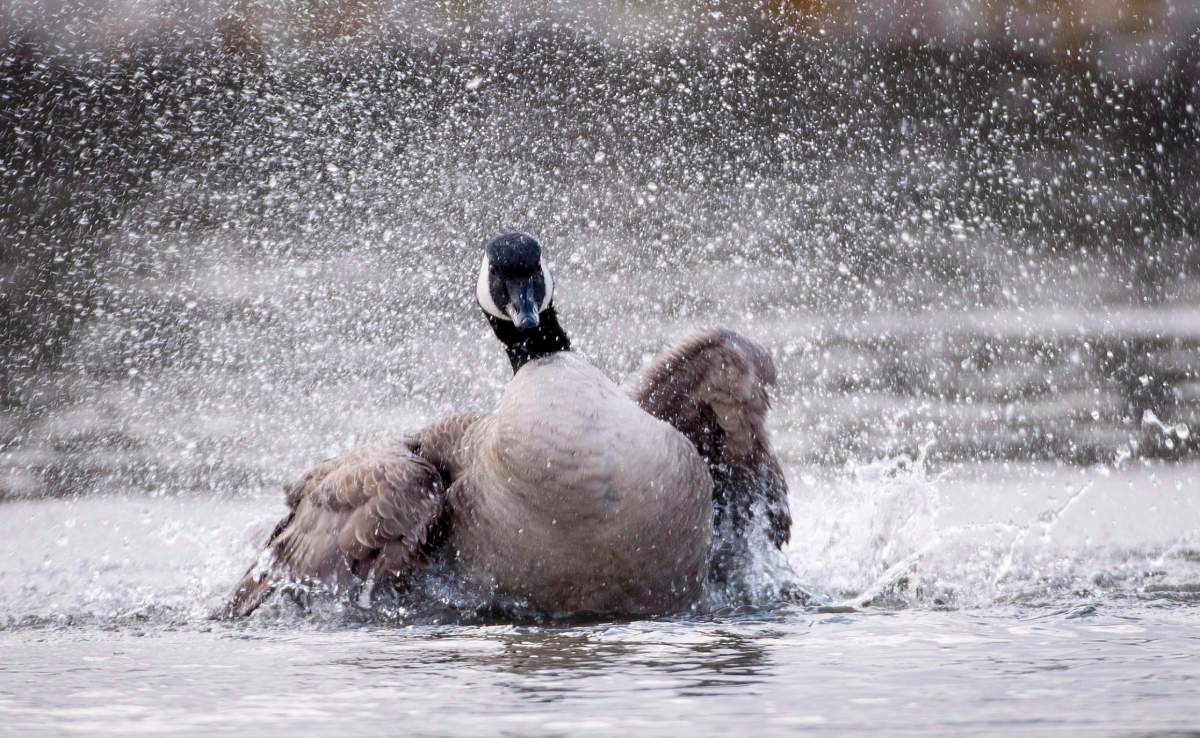Whether you call them cobra chickens or Canadian geese, one thing’s for sure — they’re still here.

Well, at least the lot that haven’t taken off after the snowstorms Manitoba has had.
Barret Miller, program manager for Winnipeg’s FortWhyte Alive wildlife preserve, said some geese don’t leave Manitoba until they absolutely have to.
“They don’t leave because it’s cold, they leave because it’s cold enough to freeze the water, and there’s still lots of open water,” he said, adding that geese need liquid water, not snow, to digest their food.
“They’re just not as efficient as other birds, and they do eat some dry material like dead plants and grain. So, think about eating the driest turkey serving, or the driest serving of stuffing ever,” he said.
“We need to drink a lot of water, too, (but) for them, it’s a matter of survival instead of just a dry mouth. They just need to drink water to digest their food.”
Miller said Canadian geese also prefer to sleep in the water. If it wasn’t frozen, he said geese would be quite happy to perch in Canada all year round.

Get daily National news
“They’re actually pretty hearty,” he said. “They’re really good down to -40 (degrees Celsius).”
However, he said some geese do stay year-round if they’ve found a place where they can have their fill of water.
“One of the best places to see geese right into, and maybe, all winter long, is actually from the moray street bridge looking west.” Miller said the rocks create class one and class one and a half rapids. “Enough to keep that water open for the geese and a few other waterfowl which choose to make that (their) winter home.”
He said with climate change and a developing landscape in the mix, water doesn’t freeze as quickly, and geese hang out a little longer — a pattern Miller said he’s noticed gradually over the years.
He noted the biggest change is not that geese are staying–which is still only a minority of the population–but that they’re not migrating as far south.
“Before, you might have to go all the way to Missouri, and now you could stop in Southern Minnesota,” he said.
Most of the straggling geese are waiting on a strong northern wind for that extra push down south, Miller said. “Think about riding a bike. You really want that wind at your back, so a lot of these birds that are waiting, are waiting for that push from a tailwind.”













Comments